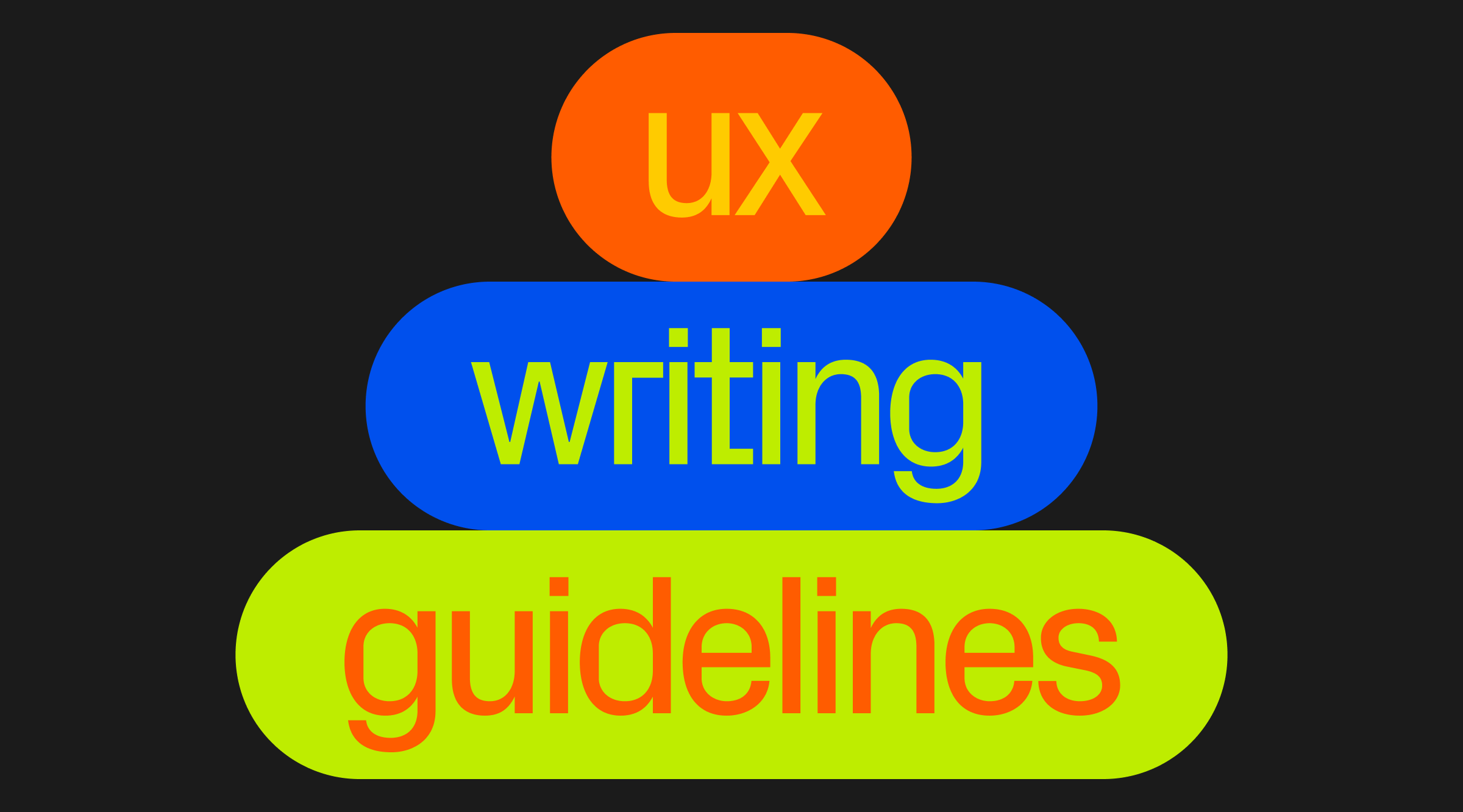UX writing tips for designers: how to craft user-friendly content
Master UX texts with straightforward dos and don'ts and get inspired by actual examples to make your content feel more human.

88% of users won't give a website or app another chance after just one bad experience, and a big part of that experience is how the interface talks to you. When a site or an app communicates in a way that's friendly and clear, it adds a human touch that can make all the difference.
What is content design
Briefly, it's the art of using simple words to explain things in digital spaces.
In more details: UX texts are all about the words you see and interact with on websites and apps, from the buttons you tap to the directions that guide you. By keeping things clear, thoughtful, and helpful, UX copy is like hints that help you understand how to use a digital product without getting overwhelmed or confused.
Why content is important to design
Content is the heart of design because it shapes how we communicate with products. Nielsen Norman Group found out that the words we choose on screens can seriously affect what users decide to do. This shows just how key it is to write clear and helpful copy. It helps guide users smoothly, making them feel good about their choices and building trust in the brand. By focusing on getting the words just right, designers can make digital spaces that are not only easy to use, but that also really connect with what users need and what businesses want to achieve.
Core elements that make up UX writing
When we dive into the world of UX texts, we're talking about all those little bits of text that help you navigate through apps and websites. Here's a breakdown of some of the basic components.
Headlines: imagine headlines as the big, welcoming signs that tell you exactly where you are and what you can find there. For example, a headline on the Netflix main page that says “Trending now” lets you know what people in the world are watching right now.
Descriptions: these help to further expand the headline. For example, on the new iPhone page, a description reveals the product's unique selling proposition.
Pop-ups: these are like helpful reminders that pop up just when you need them. When used wisely, they can save the day by giving you a heads-up about a special deal, remind you to save your work before you exit, or inform you about an important update.
Error messages: nobody likes hitting a roadblock, but a friendly error message can turn frustration into a quick fix. It’s more pleasant to get “We can’t find that page. But here’s a way back home” instead of a cryptic “Error 404”.
Tooltips: these are the little hints and tips that pop up just when you're wondering what to do. A field in a form might have a tooltip that says, “Your password needs to be at least 8 characters long,” helping you get it right on the first try.

Navigation text: this includes menu items and footer links, which smoothly guide users.
Basic principles of UX writing to keep in mind
UX writing makes your app or site super easy to get around, like having a buddy to help out. Adding the product's tone of voice is key—it gives that buddy a personality that really fits your brand. Below, we’ve got examples from a brand that acts like a user's friend, showing how sticking to TOV makes every message feel more personal and friendly.
Use plain, clear language
Keep your UX writing simple and straightforward.
Instead of: “Please input your credentials to proceed to your balance”
Go for: “Log in to see your balance”
Maintain consistency
Consistency in voice and tone also reinforces your brand's personality. Stick to the same words for the same things to make everyone's life easier.
Instead of: Calling it “Log in” on one button and “Sign in” on another
Go for: Pick one: say “Log in”, and use it everywhere
Be user-centric
Put yourself in your users’ shoes. Ask yourself: what do they need to know? Pay attention to what users need and like, and use that to make your content really hit the mark.
Instead of: “Sign up for our newsletter”
Go for: “Sign up for our newsletter. We only send one email a week. No spam, promise!”
Use active voice
Active voice keeps things lively and engaging.
Instead of: “Your order can be tracked by entering the tracking number here”
Go for: “Track your order with your tracking number”
Test and iterate
Try out your text, see how it goes, and keep improving it based on what works best for your users.
Instead of: Sticking to “Submit” on your form buttons because that's what you've always done
Go for: Experiment with “Send now” or “Finish” and see if more users click through
By keeping your UX writing clear, consistent, user-centric, active, and always open to improvement, you’re creating a friendly, intuitive experience that speaks directly to your users, making their journey through your product not just easy, but enjoyable.